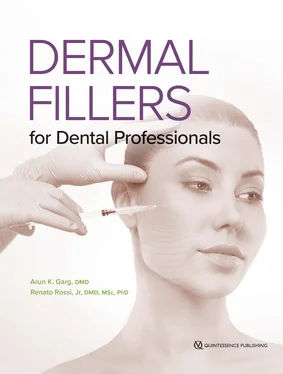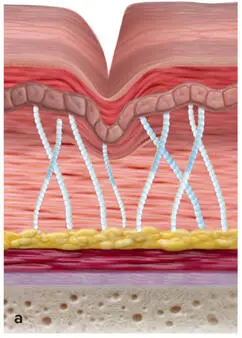
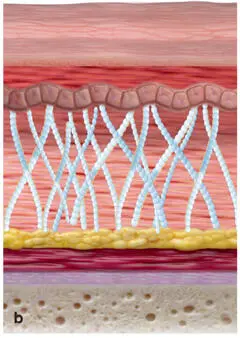
FIG 1-5Some dermal filler products stimulate the production of collagen and elastin to diminish the appearance of lines and wrinkles. (a) Before application of dermal filler. (b) After application of dermal filler.
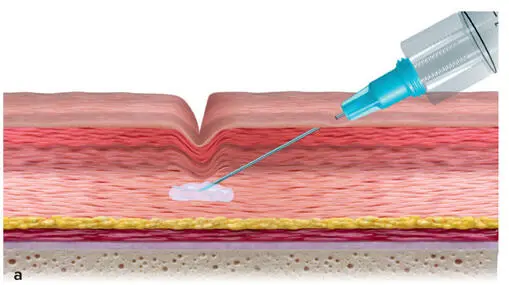
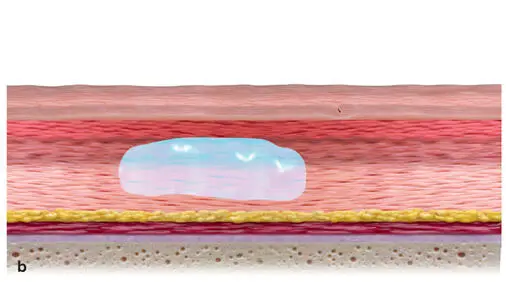
FIG 1-6Other dermal filler products are designed to add volume to sunken skin as a way to smooth the appearance of fine lines and wrinkles. (a) At the start of application of dermal filler. (b) After application of dermal filler.
Overcoming Obstacles
As more dentists (and specialists from other medical fields) begin to compete for patients in the lucrative facial rejuvenation market, they face growing opposition from the so-called core physicians in the medical esthetic field—namely board-certified cosmetic dermatologists and plastic surgeons. Those in support of this trend argue that dentists are better qualified to perform dermal filler procedures than most physicians: They are experts in the facial musculature, are proficient in administering local anesthesia, routinely encounter the most common adverse events (ie, pain, swelling, inflammation) in their daily practice, and have a fine-tuned esthetic sensibility. Those opposed assert that dentists lack the knowledge and training to achieve the types of results that patients demand and are woefully unprepared to respond to the most serious complications, which can result in blindness or death.
Ultimately, the decision is a personal one. The following are some important issues to consider.
Legal considerations
A decade ago, the idea of dentists becoming providers of facial rejuvenation therapy would have raised a lot of eyebrows, not only within professional dental associations but also among rank-and-file dentists. However, it appears that attitudes have changed. Today, a majority of state dental licensing boards allow dentists to perform dermal filler and Botox procedures for general esthetic and therapeutic purposes. Some of the states that permit dentists to perform these services limit their scope, stipulating that they must be delivered as part of a dental treatment plan and not as a standalone procedure. Others have outlined specific regulations or certification requirements that dentists must meet before they can offer these services. And yes, a small number of states still consider them outside the scope of dental practice and prohibit them altogether.
Moreover, the American Dental Association, dentistry’s national governing body with more than 163,000 members, has been providing and sponsoring continuing education in both neurotoxin and dermal filler injection procedures to general dentists and specialists alike for many years. Can there be any doubt that these procedures—like tooth whitening 20 years ago—will become a standard part of mainstream dentistry and eventually practiced throughout the United States? Check with your state dental board if you do not know the rules and regulations in your state before making your decision.
Another question relevant to state regulations has to do with malpractice insurance. If your dental liability malpractice insurance does not cover dermal filler procedures, you are strongly advised to find a third-party carrier who will add a rider policy to protect you in the event of a liability claim.
Ethical considerations
While the boundaries separating general and specialty practices are fading, both in medicine and dentistry, even some dentists question whether their training adequately prepares them to administer cosmetic facial injections. After all, don’t dermatologists undergo rigorous training to specialize in these procedures?
Actually, many dermatology and plastic surgery programs provide minimal training in dermal filler procedures. The Accreditation Council for Graduate Medical Education (ACGME) requires dermatology residents to “demonstrate knowledge of the indications, contraindications, complications, and basic techniques of” many popular cosmetic procedures (including dermal fillers), and to “perform or observe” five dermal filler procedures. 2 (Dermatologists who complete a fellowship in esthetic medicine are a different story.) Moreover, according to the American Academy of Facial Esthetics, dermal filler procedures are routinely performed by physicians trained in obstetrics and gynecology, ophthalmology, gastroenterology, internal medicine, and podiatry as well as registered nurses, physicians’ assistants, and so-called medical estheticians. 3 A strong argument can be made that dentists have more knowledge and training in the anatomy, biochemistry, and physiology of the head and neck than any of these providers.
Practical considerations
There are important practical questions to ask yourself before making your decision. For example, how would adding esthetic facial therapy to your practice affect your personal brand? A practice that already promotes smile makeovers, tooth whitening, and other cosmetic services will find it easier than one that promotes holistic therapies, for instance. Similarly, your current patient demographics should be an important factor in your decision. Is your practice family-oriented with an emphasis on conservative treatment? Or is it more spa-like, appealing to patients who like to be pampered with personal music devices and the like? And don’t forget to factor in your competition. Is there another dental practice in your area offering filler treatments? That could have a big impact on your decision one way or another. If there is a cosmetic dermatologist in your building or vicinity, that will also influence your thinking.
Finally, do not underestimate the importance of gaining buy-in from both your front and back office staff. It is vital that all members of the staff receive training in how the procedures work, what they cost, the amount of time to schedule for appointments, the materials required, and how to incorporate them into operating systems. Your patients’ first line of contact is your front office staff, so they will need scripts to help them answer questions about the treatments.
One effective way to engage your staff in the new service is to treat them (and even their family members) at no cost. Staff treatment sessions are a win-win: Employees cannot help but take a personal interest in the new procedures, and you get more opportunities to practice your injection techniques. A huge bonus is that your employees can share their own experiences with current and prospective patients and become true advocates of the new service.
All of these considerations must be weighed against the potential benefits of adding facial rejuvenation treatments to your practice portfolio.
Return on Investment
A standard dental operatory is suitable for performing cosmetic dermal filler injections and requires no retooling or purchase of special equipment. And at $500 to $600 per procedure, these services are not only profitable but can have a dramatic impact on practice production. Investment costs, on the other hand, are negligible. The practice management software may have to be updated and new forms and letterhead printed. Inventory costs will rise with the need to stock filler products. As described previously, staff training can be carried out in-house at minimal cost. That leaves marketing, which requires a careful strategy for those who want to offer their new services to others beyond their patients of record.
Читать дальше
